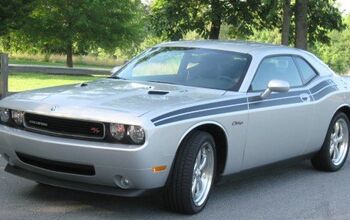CAW Workers Ratify Chrysler Agreement As The Countdown To 2016 Begins
Workers at Chrysler plants in Windsor and Brampton, Ontario ratified the CAW’s labor agreement by an overwhelming majority, despite a lack of new product or investment at either plant.
A new paint shop and a third shift at the Brampton Assembly Plant were rumored in the run-up to the deal, but neither materialized. While current jobs are protected under the agreement, what happens after its expiration at the end of 2016 is now the question on the minds of everyone from plant workers to industry observers.
When we last left off, I put forward the theory that Chrysler could move production of the LX cars to Italy, alongside the rumored baby Jeep that is thought to be part of their plan to export Italian-built cars to North America. TTAC readers suggested that this was a stretch, and the more likely candidate was Mexico. This isn’t out of the realm of possibility, but the question of “what will be built in Italy?” is a big question mark staring us all in the face.
In the mean time, CAW President Ken Lewenza will pursue his “ National Auto Policy“, which demands that the government devalue the Canadian dollar, suspend free trade talks with Japan and South Korea and take equity stakes in OEMs. When the CAW’s Auto Policy initiative was first floated back in April, The Globe and Mail dubbed it “ retrograde“, and some of its tenets, like devaluing Canada’s currency, seem totally implausible to the point where it’s difficult to take the proposal seriously. At best, it’s merely a distraction from the lack of meaningful gains with Chrysler in the areas of product and investment. At worst, it’s a foolish idea with little grounding in reality that will only serve to expedite the process of sending jobs abroad.
More by Derek Kreindler
Latest Car Reviews
Read moreLatest Product Reviews
Read moreRecent Comments
- UnoGeeks Great information. Unogeeks is the top SAP ABAP Training Institute, which provides the best SAP ABAP Training
- ToolGuy This thing here is interesting.For example, I can select "Historical" and "EV stock" and "Cars" and "USA" and see how many BEVs and PHEVs were on U.S. roads from 2010 to 2023."EV stock share" is also interesting. Or perhaps you prefer "EV sales share".If you are in the U.S., whatever you do, do not select "World" in the 'Region' dropdown. It might blow your small insular mind. 😉
- ToolGuy This podcast was pretty interesting. I listened to it this morning, and now I am commenting. Listened to the podcast, now commenting on the podcast. See how this works? LOL.
- VoGhost If you want this to succeed, enlarge the battery and make the vehicle in Spartanburg so you buyers get the $7,500 discount.
- Jeff Look at the the 65 and 66 Pontiacs some of the most beautiful and well made Pontiacs. 66 Olds Toronado and 67 Cadillac Eldorado were beautiful as well. Mercury had some really nice looking cars during the 60s as well. The 69 thru 72 Grand Prix were nice along with the first generation of Monte Carlo 70 thru 72. Midsize GM cars were nice as well.The 69s were still good but the cheapening started in 68. Even the 70s GMs were good but fit and finish took a dive especially the interiors with more plastics and more shared interiors.


































Comments
Join the conversation
The Detroit-3 Canadian workforce has fallen from 70,000 to less than 21,000 in 30 years. Bludgeoning the automakers into accepting unaffordable contracts is hastening the denouement. Unlike the union bosses, the CEOs are not financial nincompoops. Long term they won't pay the world's highest auto assembly wages. Chrysler's refusal to commit to a third shift at the Brampton plant is a thousand jobs that in all likelihood won't happen. Taxpayers will rebel at the thought of another carmaker bailout. Why should they pay for union foolishness? No taxpayer handouts and the American brands will pack up and leave Canada, probably within 10 years. The Japanese carmakers with Canadian plants have to be nervously eying events. They must match CAW wages to keep the barbarians on the far side of the gates. Nor are European and Asian auto companies clamoring to build new Ontario factories. They too are finding Canada unaffordable.
First of all devaluing a currency is not as easy as some politicians believe. In the past one of the levers used was to increase/decrease interest rates. With rates within 50 basis points of all time low, the bank of Canada has little room to move. When the cdn dollar was as low as 62 cents to the us dollar, the CAW used this advantage to negotiate a very rich series of contracts, richer than the UAW contracts. This $ advantage could have seen the number of employees in the canadian auto sector greatly increase. Instead the CAW traded increased jobs for increased pay and benefits. Their priviledge to do so, no argument. But now times have changed, my tax dollars have been used to maintain these CAW jobs, now there should be some concern on the CAW part to the sacrifice us taxpayers have made. But true to form, the CAW is only looking to maximize their benefit and to hell with all others.